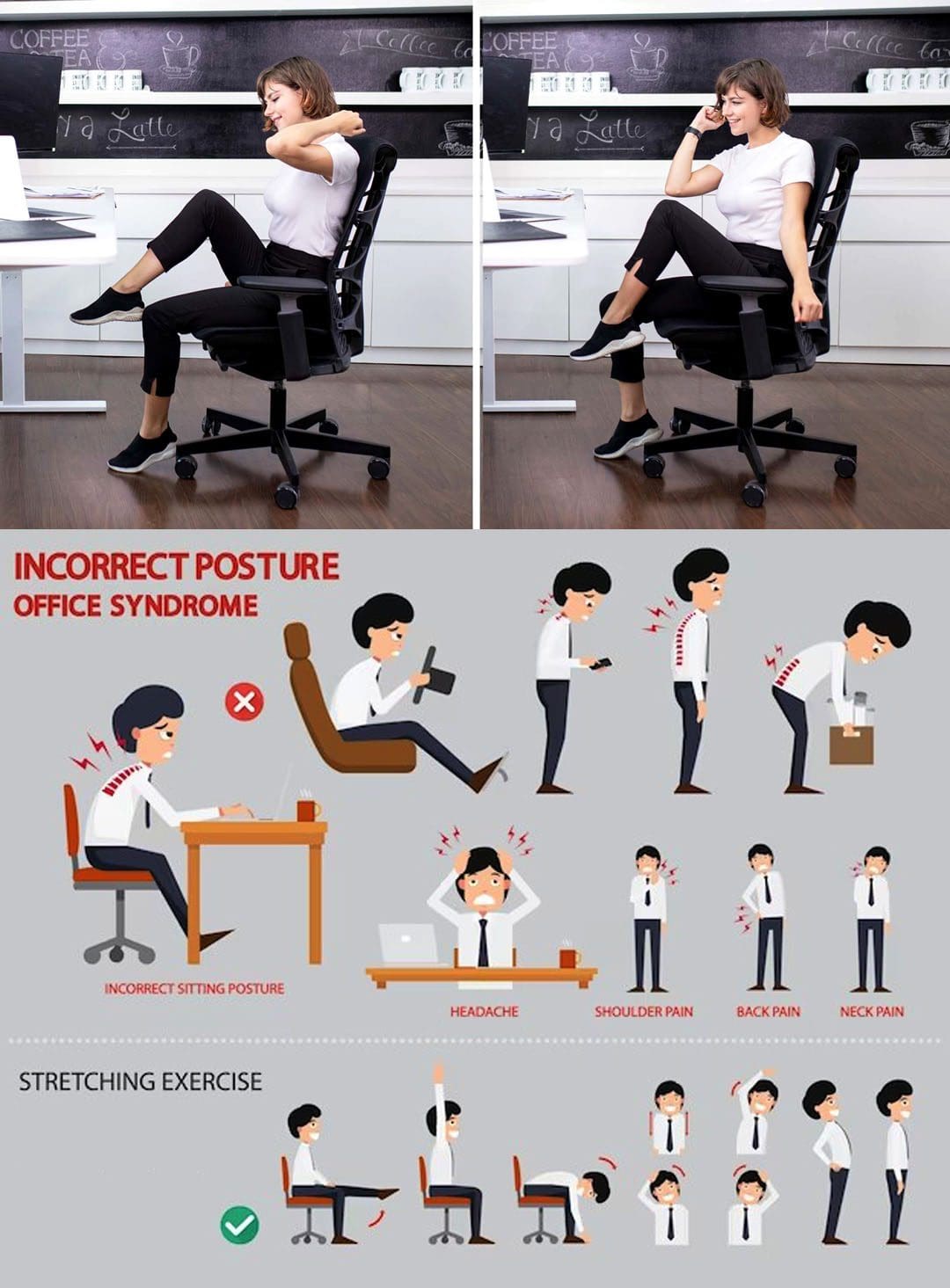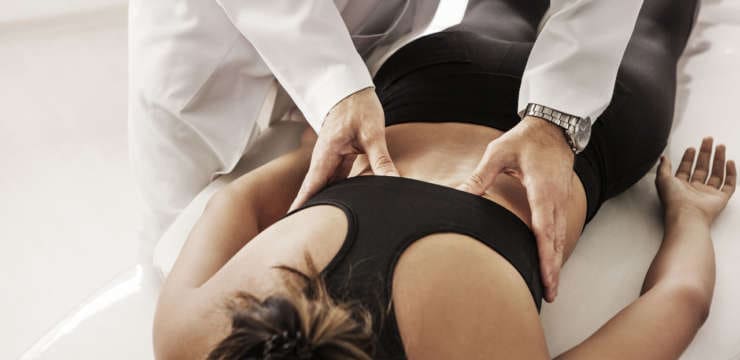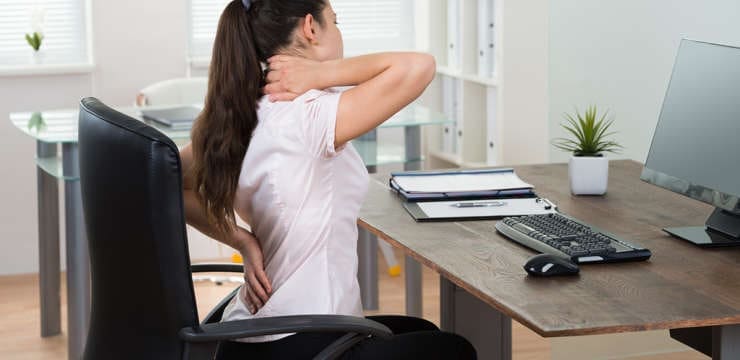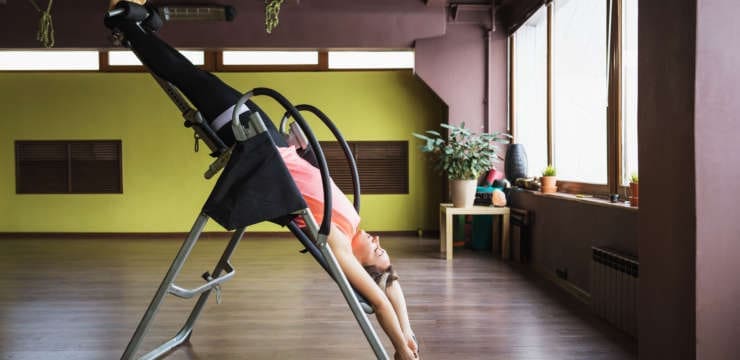
“For individuals trying to achieve a healthy posture, could using posture awareness training be effective in treatment and prevention?”

Table of Contents
Posture Awareness
Spinal curves help support the body’s weight, movement, and balance. Five areas include the neck, upper back, lower back, sacrum, and coccyx. The bottom of the spine or sacrum rests between the two hip bones that comprise the pelvis. Because of this location, the movements made with the pelvis significantly affect the spine. (Ibrahim Alkatout, et al., 2021) When the pelvis moves, the spine moves.
- Posture-related back pain and associated symptoms are often caused by a weakened strength and flexibility ratio between the opposing muscle groups that hold the body upright.
- Achieving healthy posture requires technique and consistent practice for maintaining a healthy pelvis and low back curve. (DeokJu Kim, et al., 2015)
- Finding the low back curve and exploring how it responds when moving the pelvis is important to effective posture awareness training.
Lower Back Curve Awareness Exercise
One important thing to do to increase postural awareness is to become aware of the low back curve. (Arkadiusz ?ukaz ?urawski, et al., 2020)
Sit On a Firm Chair or Stool
- So that the weight is planted into the seat in a balanced way.
Hold Onto the Arms of the Chair
- If the chair doesn’t have arms, hold onto the edge of a desk/workstation or the sides of the chair seat.
- This will support the back when moving the pelvis.
- Maintaining core abdominal strength is key to preventing back injury. (Erika Zemková, Ludmila Zapletalová. 2021)
Movement
- Tilt the pelvis forward.
- In this position, notice the slightly exaggerated arch in the lower back and the increase in lower back muscle tension.
- A moderate amount of this increase and exaggeration is normal.
Relax Back to the Start Position
Sitting upright with the hip bones/top of the pelvis directly above the bottom.
- Next, tilt the pelvis back.
- The abs may have to work hard to support this position
- Use your hands against the chair for support.
- Check the lumbar curve area, noticing if it has flattened out.
- Notice the tension in the back muscles.
- Is it a little looser? This is normal.
Relax Back to the Start Position
- Sitting upright.
- Repeat the sequence again.
- This time, when in the forward position, pause briefly and slide a hand between the lower back and the back of the chair or the wall.
- When in the backward position, there will be little to no space between the lower back and the seatback or wall.
Problems
- If there are problems moving the pelvis back and forth, imagine a basket or bowl of fruit.
- The pelvis has a round shape and is open at the top, like a bowl or basket.
- Imagine the fruit is placed toward the front of the bowl, and the weight brings the bowl/pelvis forward.
- To go back, imagine the fruits are placed toward the back.
- The weight causes the bowl to roll backward.
- This may help to get the rhythm of the movement.
This posture awareness exercise can be used as a posture muscle builder by doing it with the back against the wall.
- A more challenging position for this exercise is standing against a wall.
- Keep the heels against the baseboard to really work the abs.
- Start with sitting and gradually to standing.
Foot Motion and Posture
References
Kim, D., Cho, M., Park, Y., & Yang, Y. (2015). Effect of an exercise program for posture correction on musculoskeletal pain. Journal of physical therapy science, 27(6), 1791–1794. doi.org/10.1589/jpts.27.1791
Alkatout, I., Wedel, T., Pape, J., Possover, M., & Dhanawat, J. (2021). Review: Pelvic nerves?-?from anatomy and physiology to clinical applications. Translational neuroscience, 12(1), 362–378. doi.org/10.1515/tnsci-2020-0184
?urawski, A. ?., Kiebzak, W. P., Kowalski, I. M., ?liwi?ski, G., & ?liwi?ski, Z. (2020). Evaluation of the association between postural control and sagittal curvature of the spine. PloS one, 15(10), e0241228. doi.org/10.1371/journal.pone.0241228
Zemková, E., & Zapletalová, L. (2021). Back Problems: Pros and Cons of Core Strengthening Exercises as a Part of Athlete Training. International journal of environmental research and public health, 18(10), 5400. doi.org/10.3390/ijerph18105400
Disclaimers
Professional Scope of Practice *
The information herein on "How Posture Awareness Training Could Help Balance Your Spine" is not intended to replace a one-on-one relationship with a qualified health care professional or licensed physician and is not medical advice. We encourage you to make healthcare decisions based on your research and partnership with a qualified healthcare professional.
Blog Information & Scope Discussions
Welcome to El Paso's wellness blog, where Dr. Alex Jimenez, DC, FNP-C, a board-certified Family Practice Nurse Practitioner (FNP-C) and Chiropractor (DC), presents insights on how our team is dedicated to holistic healing and personalized care. Our practice aligns with evidence-based treatment protocols inspired by integrative medicine principles, similar to those found on dralexjimenez.com, focusing on restoring health naturally for patients of all ages.
Our areas of chiropractic practice include Wellness & Nutrition, Chronic Pain, Personal Injury, Auto Accident Care, Work Injuries, Back Injury, Low Back Pain, Neck Pain, Migraine Headaches, Sports Injuries, Severe Sciatica, Scoliosis, Complex Herniated Discs, Fibromyalgia, Chronic Pain, Complex Injuries, Stress Management, Functional Medicine Treatments, and in-scope care protocols.
Our information scope is limited to chiropractic, musculoskeletal, physical medicine, wellness, contributing etiological viscerosomatic disturbances within clinical presentations, associated somato-visceral reflex clinical dynamics, subluxation complexes, sensitive health issues, and functional medicine articles, topics, and discussions.
We provide and present clinical collaboration with specialists from various disciplines. Each specialist is governed by their professional scope of practice and their jurisdiction of licensure. We use functional health & wellness protocols to treat and support care for the injuries or disorders of the musculoskeletal system.
Our videos, posts, topics, subjects, and insights cover clinical matters, issues, and topics that relate to and directly or indirectly support our clinical scope of practice.*
Our office has reasonably attempted to provide supportive citations and has identified the relevant research studies or studies supporting our posts. We provide copies of supporting research studies available to regulatory boards and the public upon request.
We understand that we cover matters that require an additional explanation of how they may assist in a particular care plan or treatment protocol; therefore, to discuss the subject matter above further, please feel free to ask Dr. Alex Jimenez, DC, APRN, FNP-BC, or contact us at 915-850-0900.
We are here to help you and your family.
Blessings
Dr. Alex Jimenez DC, MSACP, APRN, FNP-BC*, CCST, IFMCP, CFMP, ATN
email: coach@elpasofunctionalmedicine.com
Licensed as a Doctor of Chiropractic (DC) in Texas & New Mexico*
Texas DC License # TX5807
New Mexico DC License # NM-DC2182
Licensed as a Registered Nurse (RN*) in Texas & Multistate
Texas RN License # 1191402
ANCC FNP-BC: Board Certified Nurse Practitioner*
Compact Status: Multi-State License: Authorized to Practice in 40 States*
Graduate with Honors: ICHS: MSN-FNP (Family Nurse Practitioner Program)
Degree Granted. Master's in Family Practice MSN Diploma (Cum Laude)
Dr. Alex Jimenez, DC, APRN, FNP-BC*, CFMP, IFMCP, ATN, CCST
My Digital Business Card






